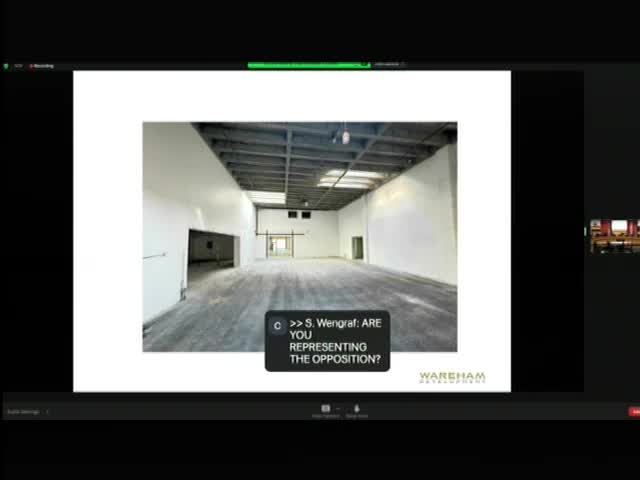Filmmakers fight for recognition as artists in zoning debate
July 30, 2024 | Berkeley , Alameda County, California

This article was created by AI summarizing key points discussed. AI makes mistakes, so for full details and context, please refer to the video of the full meeting. Please report any errors so we can fix them. Report an error »

In a recent government meeting, discussions centered around the classification of filmmaking within the context of arts and media production, highlighting the ongoing debate over the status of filmmakers in zoning regulations. Vivian Kleinman, a filmmaker and recipient of the Eureka Fellowship for Artists, emphasized the artistic nature of filmmaking, arguing that filmmakers should be recognized as artists rather than merely media producers. She noted that the Fantasy building, where many filmmakers operate, had previously enjoyed full occupancy but has seen a decline, with many forced to vacate their offices.
Rick Allerbaugh, a member of the West Berkeley Arts and Industry Council, responded to concerns raised by the Wareham Corporation regarding the classification of filmmaking. He clarified that the legal issue at hand is not about whether filmmaking fits into the category of media production or arts and crafts, but rather the original intent of the zoning provisions that protect artistic uses. Allerbaugh pointed out that filmmakers have historically been included in the definition of protected arts uses, a classification reaffirmed by the Arts Commission in 2006 and 2011.
The meeting also addressed the implications of business licenses for filmmakers, with Allerbaugh asserting that the presence or absence of such licenses does not determine the legal occupancy of a space used for filmmaking. He reiterated that the ordinance does not specify business licenses as a requirement for classification as an arts and crafts use.
Samantha Updegrave, the zoning officer, provided additional context, noting that the definitions of arts and crafts have evolved over time to include modern practices, such as the use of computers in artistic work. This evolution reflects a broader understanding of what constitutes artistic expression in contemporary society.
The meeting underscored the complexities surrounding the classification of filmmaking and its implications for artists in the community, as stakeholders continue to navigate the intersection of art, business, and zoning regulations.
Rick Allerbaugh, a member of the West Berkeley Arts and Industry Council, responded to concerns raised by the Wareham Corporation regarding the classification of filmmaking. He clarified that the legal issue at hand is not about whether filmmaking fits into the category of media production or arts and crafts, but rather the original intent of the zoning provisions that protect artistic uses. Allerbaugh pointed out that filmmakers have historically been included in the definition of protected arts uses, a classification reaffirmed by the Arts Commission in 2006 and 2011.
The meeting also addressed the implications of business licenses for filmmakers, with Allerbaugh asserting that the presence or absence of such licenses does not determine the legal occupancy of a space used for filmmaking. He reiterated that the ordinance does not specify business licenses as a requirement for classification as an arts and crafts use.
Samantha Updegrave, the zoning officer, provided additional context, noting that the definitions of arts and crafts have evolved over time to include modern practices, such as the use of computers in artistic work. This evolution reflects a broader understanding of what constitutes artistic expression in contemporary society.
The meeting underscored the complexities surrounding the classification of filmmaking and its implications for artists in the community, as stakeholders continue to navigate the intersection of art, business, and zoning regulations.
View full meeting
This article is based on a recent meeting—watch the full video and explore the complete transcript for deeper insights into the discussion.
View full meeting
